Are you planning a trip to China and want to see more than big cities? An Anhui province road trip perfectly blends breathtaking natural scenery and well-preserved ancient villages. This region in eastern China allows visitors to step back in time while enjoying some of China’s most beautiful landscapes.
This blog post will guide you through planning a self-driving tour of Anhui’s treasures. You’ll learn about the best villages to visit and practical tips to make your journey smooth and enjoyable.
Planning Your Road Trip
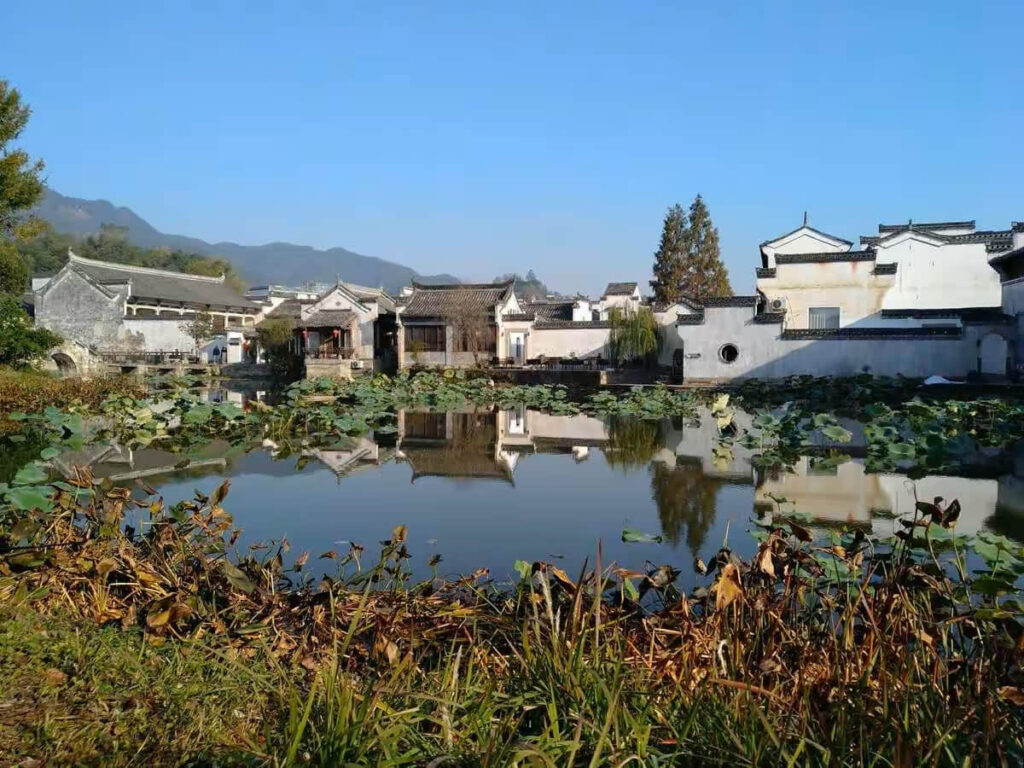
Best Time to Visit Anhui
Anhui has four distinct seasons, each offering something special for visitors:
- Spring (April-May): Warm weather with blooming flowers and green mountainsides
- Summer (June-August): Lush green landscapes but can be hot and crowded
- Fall (September-October): The most popular time with comfortable temperatures and colorful foliage
- Winter (November-February): Cold with occasional winter snow, but much less crowded
Many travelers consider October the best month to visit. The weather is pleasant, with average temperatures between 15-20°C (59-68°F), and the fall colors make the ancient villages and Yellow Mountain especially beautiful.
How to Get There
For foreign tourists, the easiest way to start your Anhui road trip is from either Shanghai or Hangzhou:
For a hassle-free experience, several travel agencies offer one-stop services that include car rental, driver (if needed), and customized itineraries. NAVO Tour is a company that specializes in providing such services to foreign visitors.
Suggested Itinerary Length
To fully appreciate what Anhui has to offer, plan for a 5-7 day trip. This allows enough time to explore:
- 2-3 ancient villages at a relaxed pace
- 1-2 days for Mount Huangshan
- 1 day for Tunxi Ancient Street and other cultural sites
Here’s a sample itinerary for a 6-day road trip:
| Day | Morning | Afternoon |
|---|---|---|
| 1 | Arrive in Huangshan City | Explore Tunxi Ancient Street |
| 2 | Drive to Hongcun Village | Explore Hongcun |
| 3 | Xidi Village | Tangyue Village |
| 4 | Drive to Mount Huangshan, take a cable car up | Explore the eastern part of the mountain |
| 5 | Watch the sunrise, hike to more viewpoints | West Sea Grand Canyon |
| 6 | Morning on the mountain, cable car down | Return to Huangshan City |
This schedule gives you enough time at each stop without feeling rushed.
Must-Visit Ancient Villages
The ancient villages of Anhui province are living museums that showcase the unique Huizhou architecture and culture that flourished during the Ming and Qing dynasties. These villages have remained largely unchanged for centuries, with their distinctive white walls, black tile roofs, and intricate wood carvings.
Hongcun Village
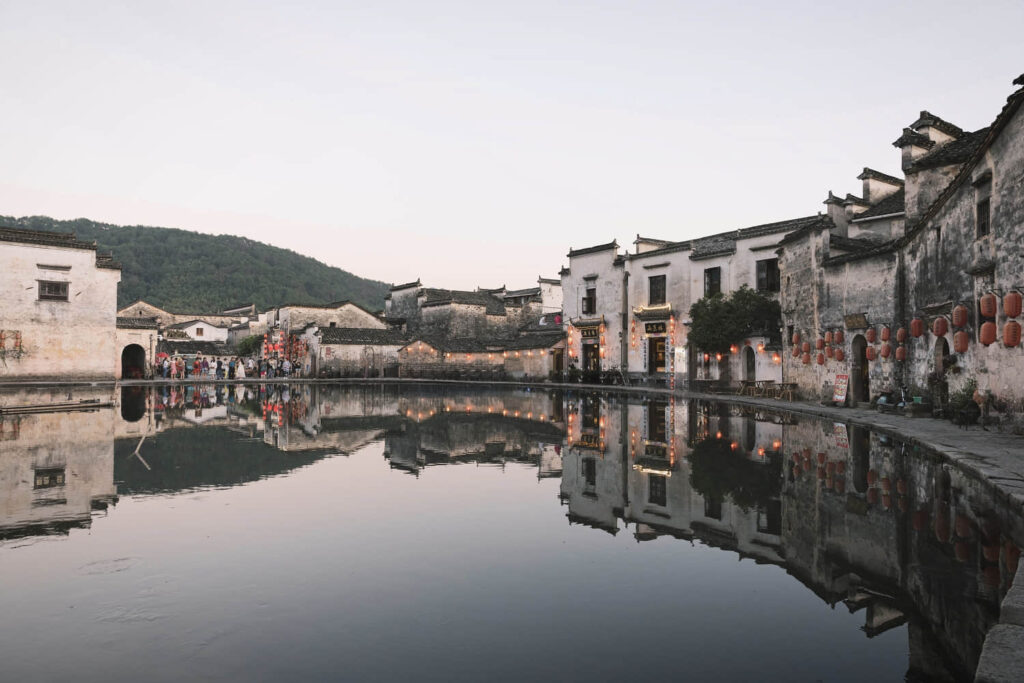
Hongcun is perhaps the most famous ancient village in Anhui, and for good reason. Founded during the Song dynasty (960-1279), this 900-year-old village is shaped like an ox, with streams and waterways flowing like blood vessels. The village was designed this way based on the principles of Feng Shui.
At the center of Hongcun lies the Moon Pond, a crescent-shaped body of water that serves as the “heart” of the ox. The pond reflects the beautiful Huizhou architecture surrounding it, creating perfect photo opportunities in the early morning when the water is still. The South Lake forms the “stomach” of the ox, and the streams throughout the village complete this living organism design.
Key spots to visit in Hongcun Village include:
- Moon Pond: The heart-shaped centerpiece of the village
- South Lake: A larger body of water offering stunning reflections of the village
- Lexu Hall: The most magnificent private residence in the village
- Chengzhi Hall: Famous for its intricate wood carvings and ancestral hall
- School of Hongcun: An ancient academy where local scholars studied
Hongcun gained international fame when “Crouching Tiger, Hidden Dragon” scenes were filmed here. The opening sequence, where the young warrior runs across rooftops, is shot in this village, and many visitors recognize the picturesque South Lake from the film.
Photography tip: Arrive at the South Lake viewing area before sunrise to capture the magical moment when morning mist hovers over the water and the first light hits the ancient buildings.
Xidi Village
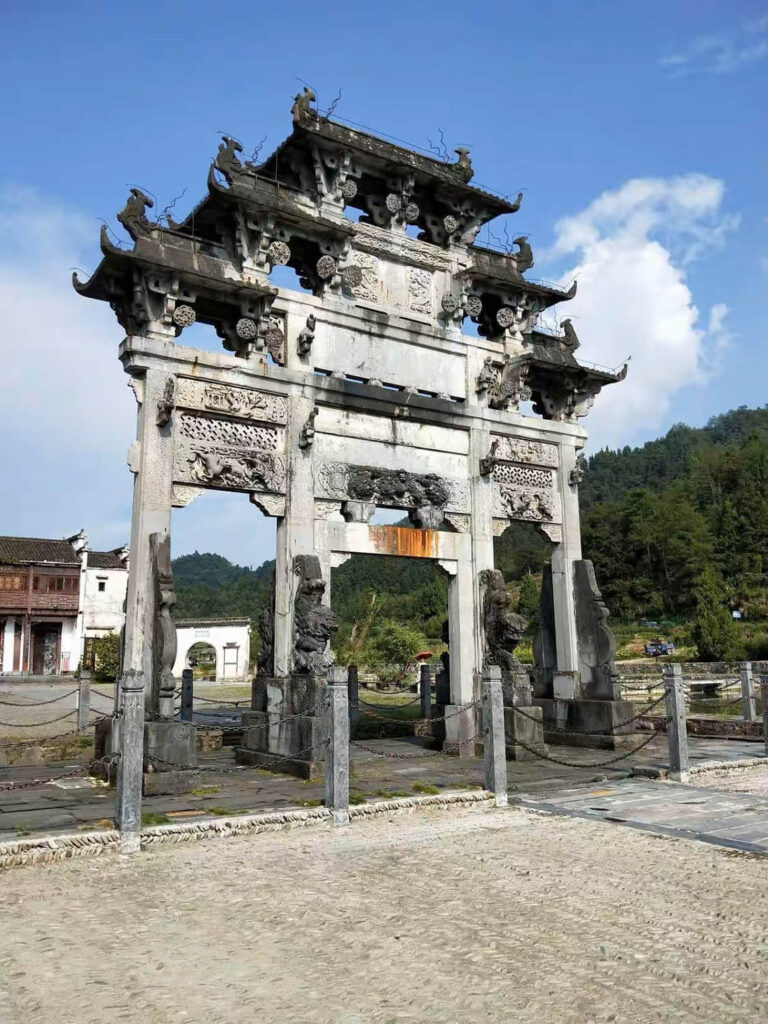
Just a short 15-minute drive from Hongcun, Xidi offers a different but equally captivating glimpse into Huizhou culture. Founded in the 11th century, Xidi flourished during the Ming and Qing dynasties when local merchants made fortunes in salt, tea, and timber trades.
Xidi village is renowned for its well-preserved residential buildings, with over 300 structures dating back to the Ming and Qing eras. The village layout follows the shape of a turtle, which is another auspicious design based on Feng Shui principles.
As you wander through the narrow streets of Xidi, you’ll notice:
- Ornate memorial arches (paifang) celebrating the achievements of local scholars
- Intricately carved stone doorways depicting scenes from Chinese mythology
- Small courtyards with fish ponds and bonsai gardens
- Ancient drainage systems that still function today
The Hu Family Ancestral Hall is a must-visit landmark in Xidi. Built by the prominent Hu family (whose ancestor Hu Wenguang founded the village), this hall showcases the finest examples of Huizhou architectural craftsmanship.
Unlike more touristy villages, Xidi still has many residents living daily among these ancient structures. You can see locals drying vegetables in courtyards, selling homemade crafts, or gathering to play traditional games.
Best time to visit: The light in Xidi is particularly beautiful in the early morning or late afternoon when the sun casts long shadows across the stone pathways and illuminates the white walls of the buildings.
Tangyue Village
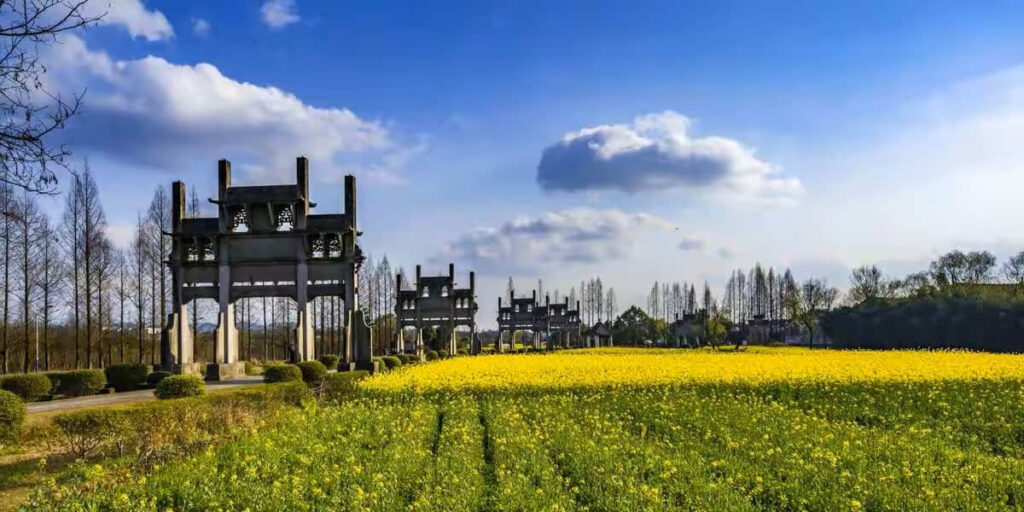
Less visited than Hongcun and Xidi but equally fascinating, Tangyue village offers a glimpse into ancient Huizhou culture’s moral codes and family values. The village is famous for its seven memorial archways, built during the Ming and Qing dynasties to honor various virtues like filial piety, loyalty, and chastity.
The Bao Family Ancestral Hall in Tangyue is one of the largest and most magnificent ancestral halls in the Huizhou region. The hall consists of seven courtyards connected by corridors, with the main ceremonial hall featuring 81 intricately carved pillars.
What makes Tangyue special is how it preserves not just buildings but also the ethical codes that governed life during imperial China. The village serves as a physical embodiment of Confucian values that influenced Chinese society for centuries.
Other Notable Villages
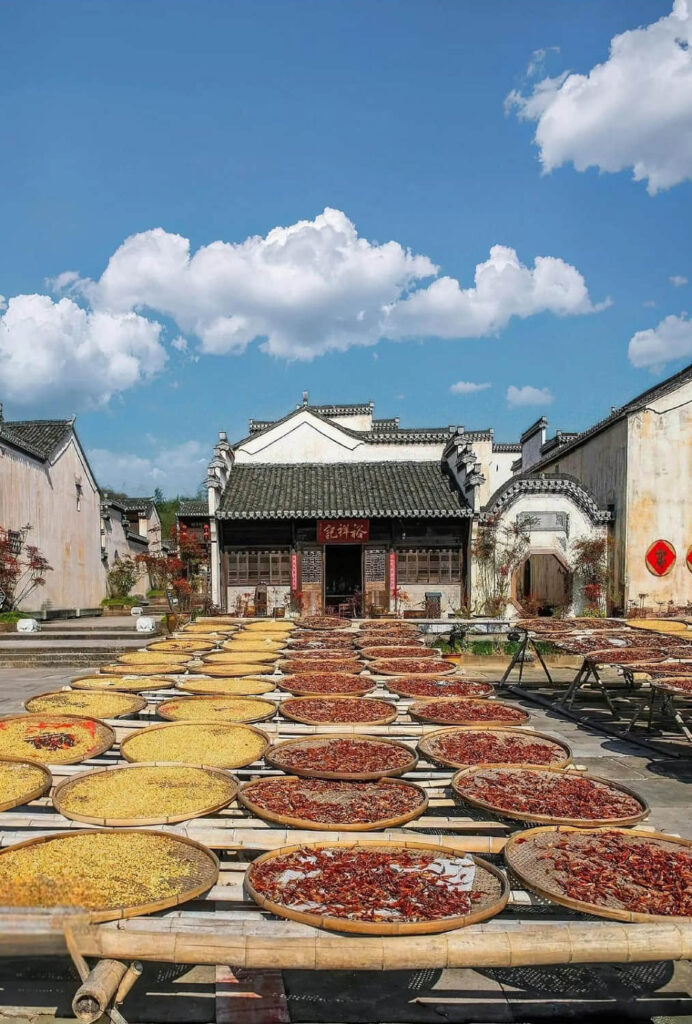
While Hongcun, Xidi, and Tangyue are the most famous, several other villages in Anhui are worth visiting if you have extra time:
- Chengkan Village: Known as the “Village of Eight Trigrams” due to its Feng Shui-based layout
- Shexian County villages: Several smaller villages with unique architectural features
- Lucun Village: Famous for its ancestral temples and defensive walls
- Nanping Village: Another filming location for “Crouching Tiger, Hidden Dragon”
Each village has its own character and special features, but all share the distinctive Huizhou architectural style with white walls, black tiles, and horse-head walls (the distinctive stepped shape of gable walls).
Scenic Stops Along the Way
While the ancient villages are the cultural highlights of Anhui, the natural landscapes in this region are equally stunning. No road trip through Anhui would be complete without exploring these scenic wonders.
Huangshan Mountain
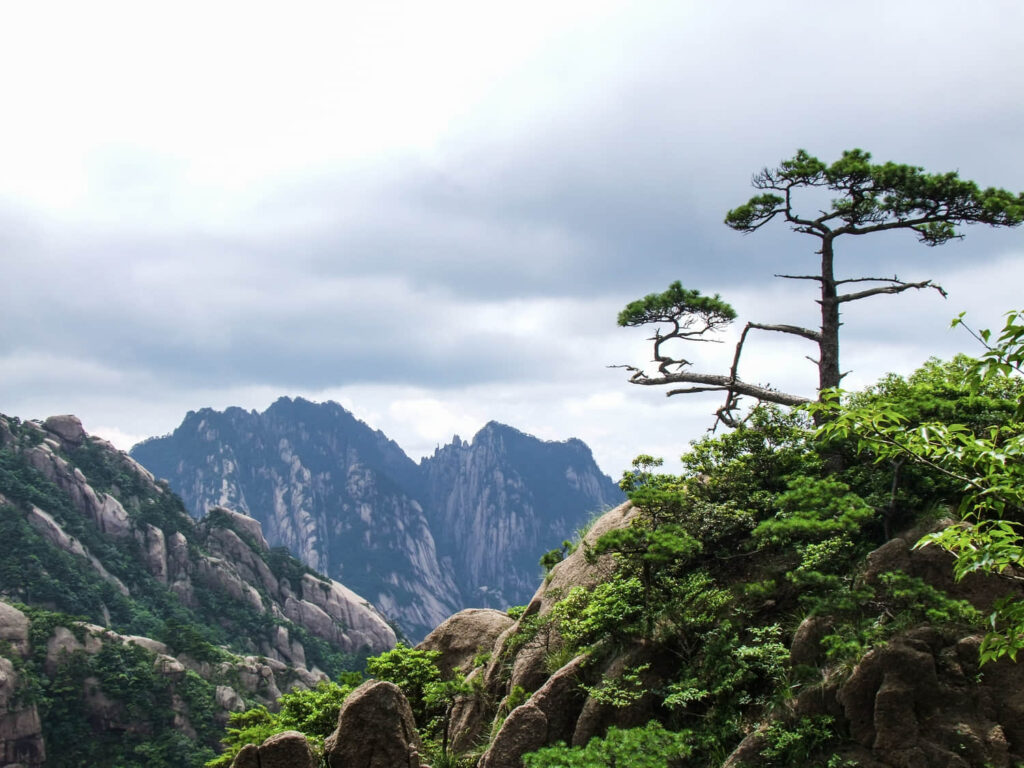
Yellow Mountain, or Mount Huangshan, is the crown jewel of Anhui province and one of China’s most famous mountains. Recognized as a UNESCO World Heritage Site, Huangshan is known for its “four wonders”: peculiarly shaped granite peaks, ancient pine trees, hot springs, and the sea of clouds that often envelop the mountain.
There are several ways to experience Huangshan Mountain:
- Take the cable car up and down (there are three different cable car routes)
- Hike up and take the cable car down (a challenging 4-6 hour climb)
- Hike both ways (only recommended for experienced hikers)
Most visitors choose to stay overnight on the mountain to witness both sunset and sunrise. The Beihai Hotel and Xihai Hotel are popular choices for accommodation on the mountain, though they tend to be fully booked during peak seasons.
Key viewpoints on Yellow Mountain include:
- Lion Peak: Famous for its stone formation resembling a lion
- Beginning-to-Believe Peak: Named because even skeptics begin to believe in the mountain’s beauty here
- Bright Summit: The highest point on the mountain at 1,841 meters
- Cloud-Dispelling Pavilion: Offers panoramic views of surrounding peaks
The West Sea Grand Canyon (also called Xihai Grand Canyon) is a must-visit area on the mountain. This deep canyon features steep cliffs, unusual rock formations, and some of the most breathtaking views on Huangshan. The full loop trail takes about 3-4 hours to complete.
Photography tip: To capture the famous “sea of clouds,” your best chances are in the early morning hours after rainfall, particularly in spring and autumn. The Bright Summit and Cloud-Dispelling Pavilion offer excellent vantage points.
Tunxi Ancient Street
Located in downtown Huangshan City, Tunxi Ancient Street (also called Tunxi Old Street) dates back over 900 years to the Song Dynasty. This 1.5-kilometer-long street is lined with well-preserved buildings from the Ming and Qing dynasties, housing shops, restaurants, and tea houses.
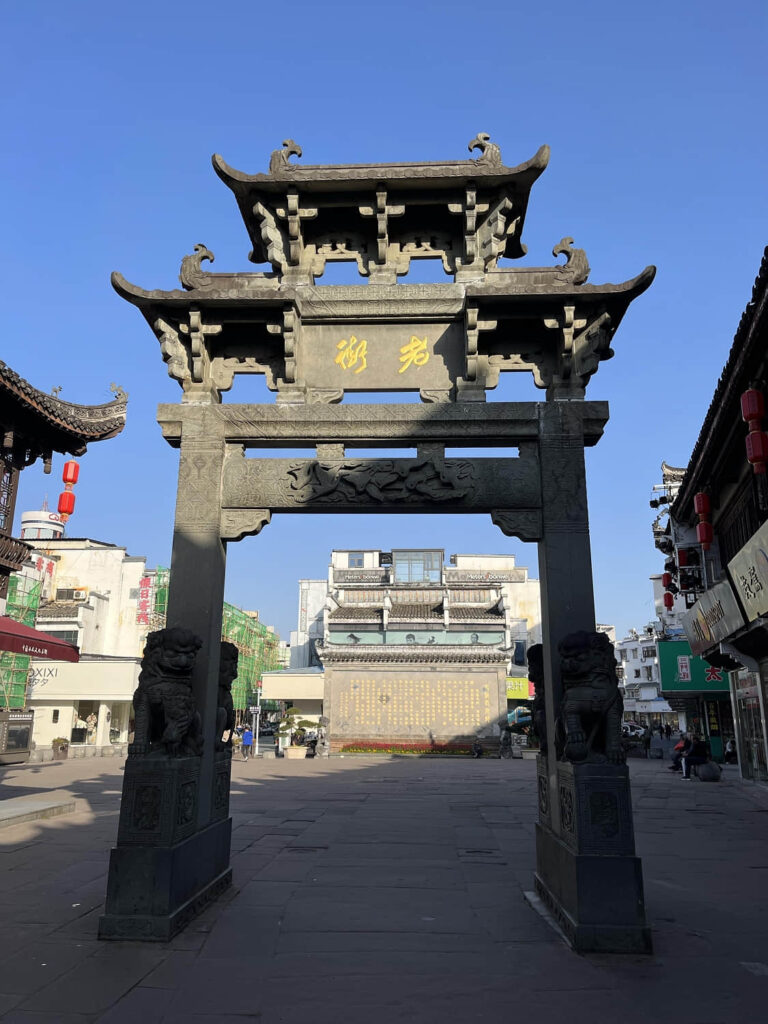
Tunxi Street is the perfect place to:
- Shop for traditional Huizhou crafts like ink stones, brushes, and paper
- Try local Anhui specialties like stinky mandarin fish and bamboo shoots
- Purchase authentic green tea from the nearby mountains
- Experience the lively atmosphere of a traditional Chinese market street
Many shops on Tunxi Street have been operating for generations, selling traditional medicines, locally made writing brushes, and other handicrafts unique to the region. The street is particularly charming in the evening when red lanterns illuminate the ancient buildings.
Tunxi Ancient Street makes for an excellent first or last stop on your Anhui road trip, as it’s conveniently located near Huangshan City, where most visitors begin and end their journey.
West Sea Grand Canyon
While technically part of Huangshan Mountain, the West Sea Grand Canyon (Xihai Grand Canyon) deserves special mention. This deep canyon features some of the most spectacular scenery in the entire mountain range.
The canyon hike consists of a loop trail with hundreds of stone steps leading down into the canyon and back up. Along the way, you’ll encounter:
- Dramatic cliffs and rock formations
- Ancient pine trees growing at impossible angles from the rocks
- Small waterfalls and streams
- Changing views of the surrounding peaks as you descend and ascend
The complete loop takes about 3-4 hours, but you can opt for a shorter version if time is limited. The trail is well-maintained with stone steps throughout, though some sections can be steep.
For those not wanting to tackle the full hike, viewing platforms near the entrance offer spectacular vistas of the canyon below.
Travel Tips for Foreign Tourists
Driving in China as a foreign tourist comes with some challenges, but with proper preparation, an Anhui road trip can be a rewarding adventure.
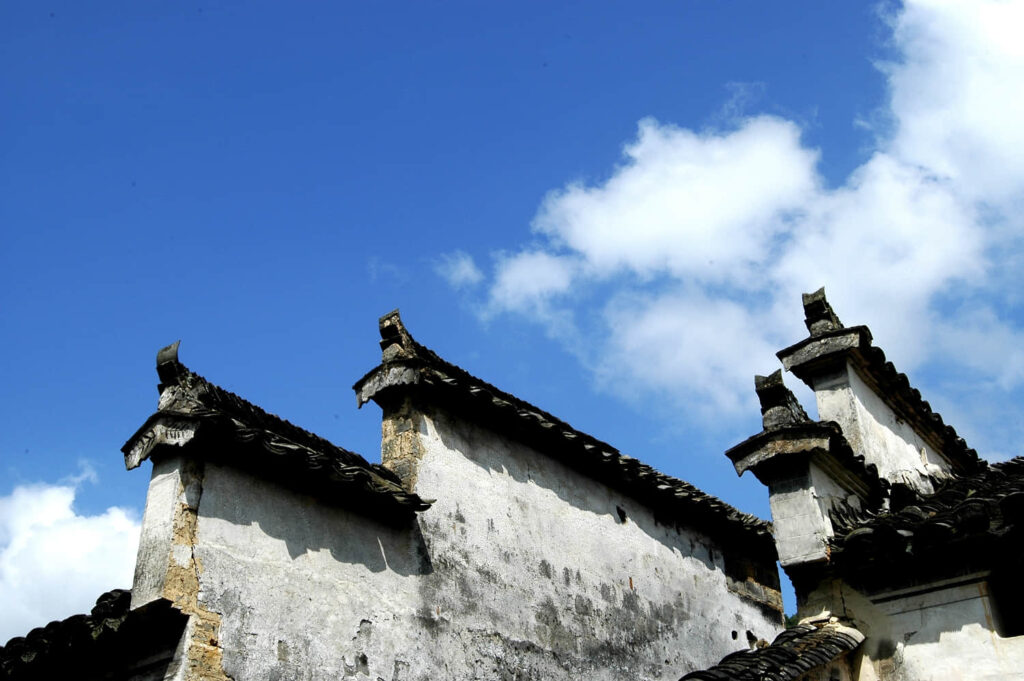
Self-Driving Tips
Before you hit the road in Anhui, here are some important things to know:
- Driver’s License: You need a Chinese temporary driving license along with your home country’s license. Obtain this before your trip.
- Navigation: Google Maps doesn’t work well in China. Download Baidu Maps or AutoNavi (Gaode) apps, which have English interfaces.
- Traffic Rules: China drives on the right side of the road. Speed limits are strictly enforced, and traffic cameras are common.
- Road Conditions: Main highways are excellent, but roads to some villages may be narrow and winding. Drive cautiously, especially in mountainous areas.
- Parking: Most villages have designated parking lots outside the pedestrian zones. Expect to pay 20-30 RMB for a day of parking.
- Gas Stations: Major fuel stations accept credit cards, but keep some cash handy for smaller stations.
Accommodation Options
Where you stay can greatly enhance your Anhui experience:
In Ancient Villages:
- Several old houses in Hongcun and Xidi have been converted into boutique hotels or guesthouses
- Staying in the villages allows you to experience them early morning and evening when day tourists are gone
On Yellow Mountain:
- Book well in advance, especially during peak seasons
In Huangshan City:
- More modern options with better amenities
- Good base for exploring Tunxi Ancient Street
For a truly authentic experience, consider homestays (nongjiale) in smaller villages, where local families rent out rooms and often provide home-cooked meals.
Cultural Etiquette
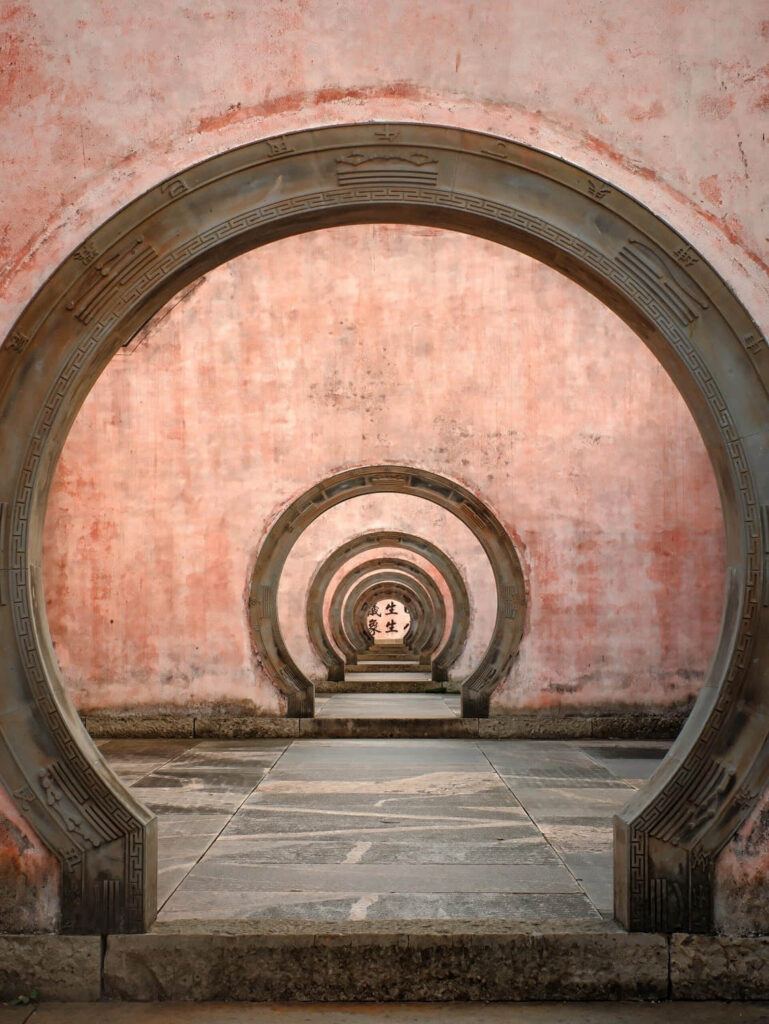
Respecting local customs will enrich your experience in Anhui’s ancient villages:
- Temples and Ancestral Halls: Remove hats when entering these sacred spaces and avoid touching religious artifacts
- Bargaining: Gentle bargaining is expected at markets and with street vendors but not in established stores
Language: Learning a few basic Chinese phrases can go a long way. While young people in tourist areas might speak some English, most villagers only speak Chinese.
Conclusion
An Anhui province road trip offers a perfect blend of China’s natural beauty and cultural heritage. From the mist-shrouded peaks of Yellow Mountain to the time-capsule ancient villages with their distinctive white walls and intricate architecture, this region provides experiences that go beyond typical tourist destinations.
The villages of Hongcun, Xidi, and Tangyue preserve centuries of Chinese history and tradition, allowing visitors to step back in time and experience life as it was during the Ming and Qing dynasties. Meanwhile, Mount Huangshan continues to inspire with its otherworldly landscapes, just as it has inspired Chinese artists and poets for centuries.
By exploring this less-traveled part of China, you’ll gain deeper insights into Chinese culture and history while enjoying some of the country’s most spectacular scenery. Whether you’re capturing the perfect photograph of the Moon Pond at dawn, hiking through the breathtaking West Sea Grand Canyon, or sampling local delicacies on Tunxi Ancient Street, an Anhui road trip creates memories that will last a lifetime.
Start planning your journey to this remarkable corner of eastern China, where ancient meets nature in perfect harmony.

